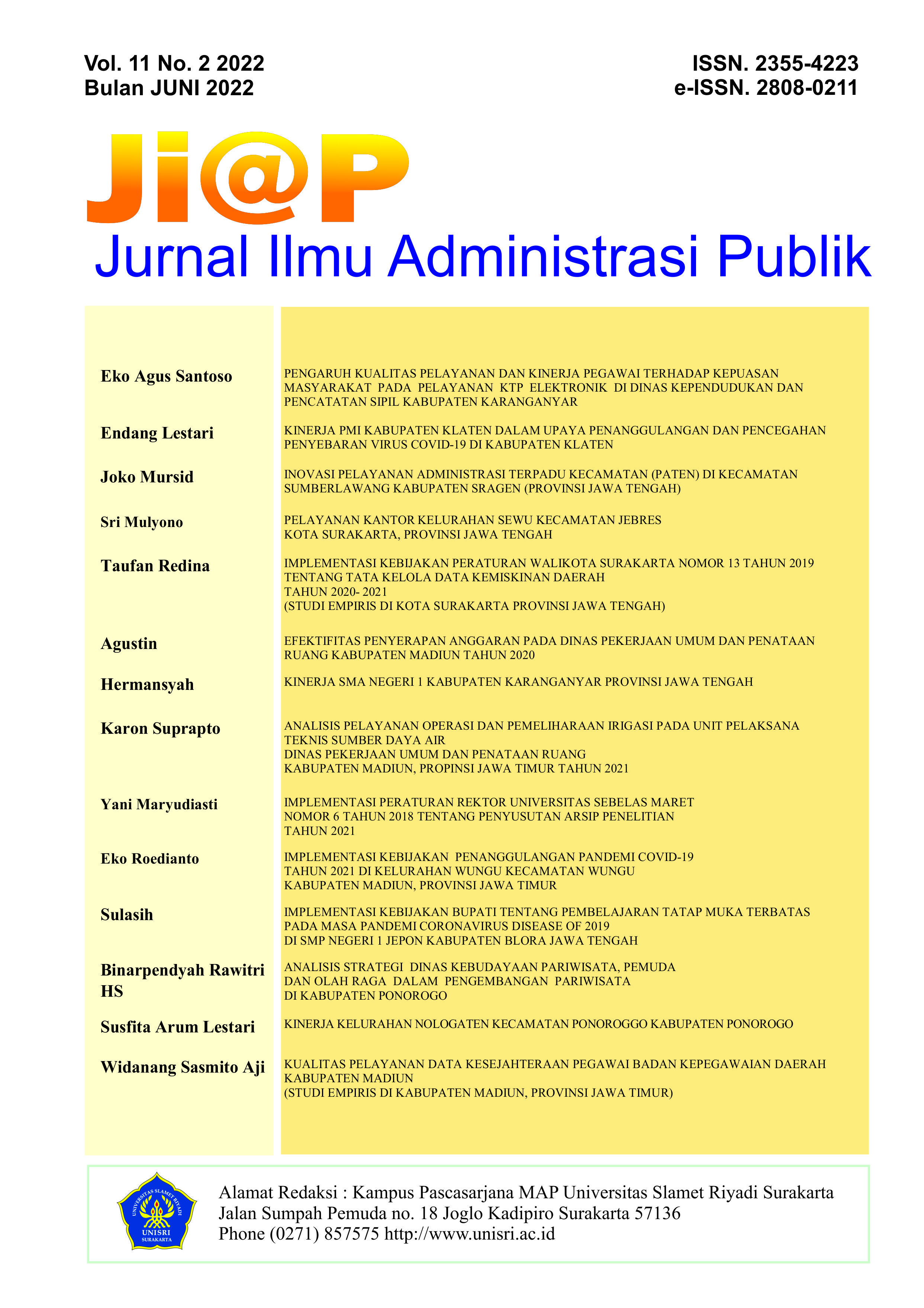EFEKTIFITAS PENYERAPAN ANGGARAN PADA DINAS PEKERJAAN UMUM DAN PENATAAN RUANG KABUPATEN MADIUN TAHUN 2020
DOI:
https://doi.org/10.33061/jp.v11i2.7156Abstract
Budget absorption is one of the indicators that can show the success of
programs or policies carried out by the government. The realization to budget
ratio reflects the absorption of the budget in carrying out various programs that
have been set. With this consideration, the ability to absorb the budget by the
local government can be an indicator of the performance of the city / district
government.The results showed that the dominant causes of low budget
absorption in the Office of Public Works and Spatial Planning of Madiun district
in the fourth quarter of 2020 were the Planning factor with a percentage of 4,98%
the Implementation of the Budget with a percentage of 3,69%, Human Resources
with a presentation of 3,75% and procurement of services with a percentage of
3,66% % while the main factor in planning led to low budget absorption in the
fourth quarter of 2020 was the presence of Government policy on budget
reduction (recofusing) 4,35% Incorrect account determination so that it needs
revision of the document 3,7%, Preparation of budget ceiling is too low not in
accordance with market prices) 3,6%, There is a price adjustment due to
government policy (escalation) 3,7%, Less effective cash budget planning causes
the implementation of activities / projects not in accordance with the withdrawal
plan per quarter / cash budget listed in the DPA form.3,75%
Keywords: Effectiveness, Absorption Stack, Martani and lubis
Downloads
Published
How to Cite
Issue
Section
License
Copyright (c) 2022 Agustin, Suwardi, Adi Purwanto

This work is licensed under a Creative Commons Attribution-NonCommercial 4.0 International License.
Authors who publish this journal agree to the following terms:
- Authors retain copyright and grant the journal right of first publication with the work simultaneously licensed under a Creative Commons Attribution License that allows others to share the work with an acknowledgement of the work's authorship and initial publication in this journal.
- Authors can separately make additional contractual arrangements for non-exclusive distribution published by the journal (e.g., publish it in a book), with an acknowledgement of its initial publication in this journal.
- Authors are allowed and encouraged to send their work via online (e.g., in the institutional repositories or their website) after published by the journal.













